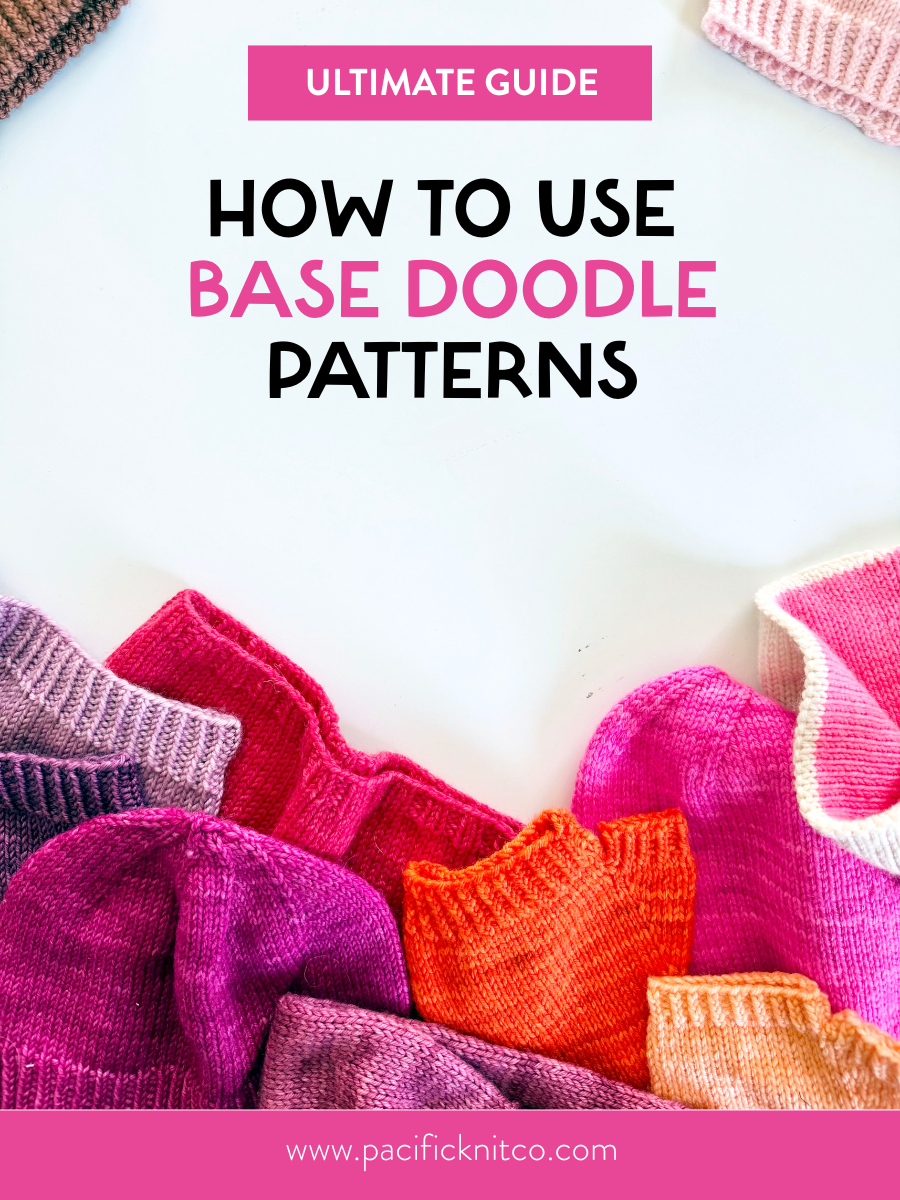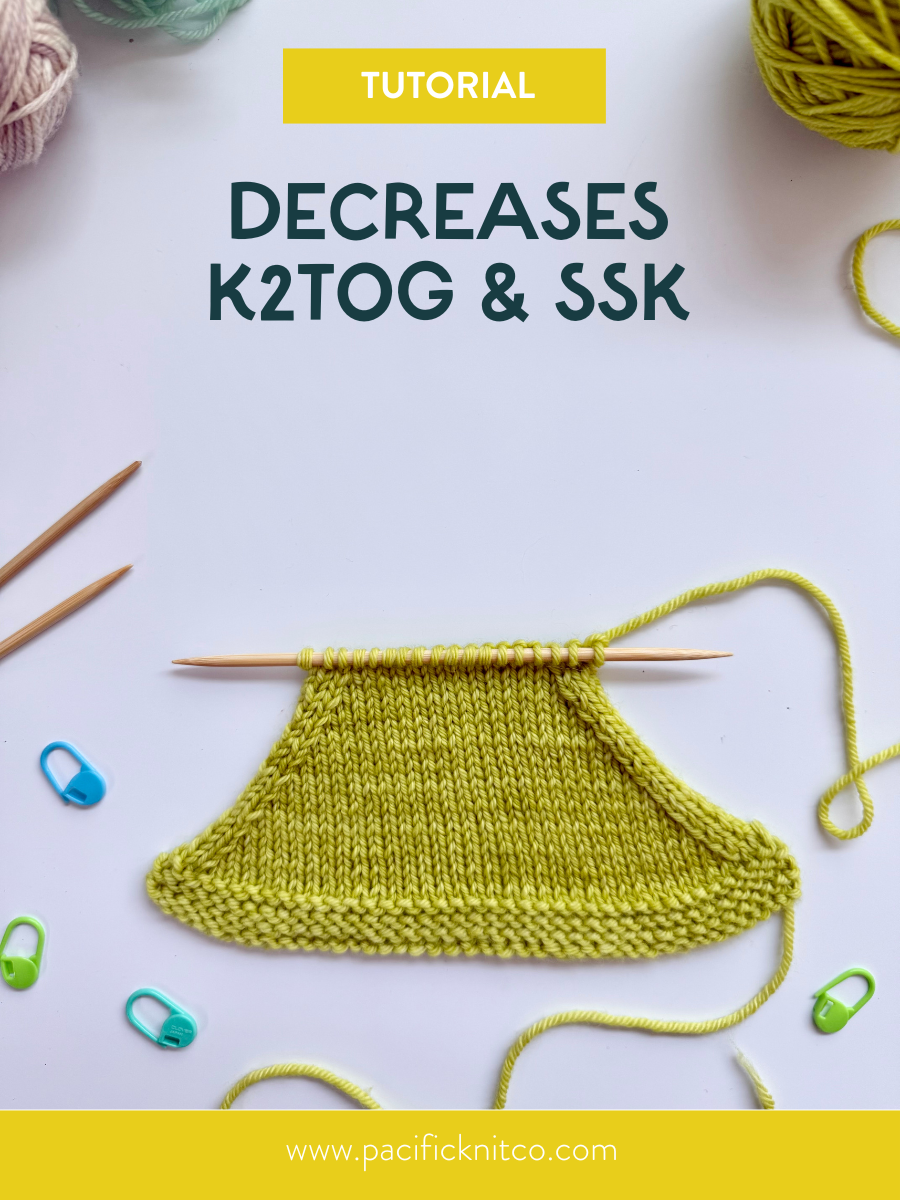Ultimate Guide: How to Choose Yarns for your Doodle Project

Wondering how to create the very best yarn palette for your next Doodle colorwork project? Building a yarn color palette is the 3rd step in the Doodle Framework: 4 easy steps to Doodle with yarn:
1: CHOOSE YOUR PATTERN
Cowls, Hats, Socks, & more! Charts work on any Base Doodle pattern!
2: CHOOSE YOUR CHARTS
Pick a theme or grab a few Doodles to mix-and-match!
3: CHOOSE YOUR YARN
Grab a main color and a few accents or create the perfect stash buster!
4: START KNITTING!
Choose your first motif and colors and simply start knitting!

HOW TO CHOOSE YARNS FOR YOUR DOODLE PROJECT
Building a color palette for your Doodle can impact the entire vibe of your project. You can use bright bold rainbows, moody deep tones, subtle lower contrast colors, pops of neon against a neutral, or anything else you can think of!
Follow the steps below to create your custom color palette:
»» Choose the number of colors
»» Figure out yardage
»» Consider your Theme
»» Shop your stash
»» Color theory & Contrast
»» Knit!
It's that easy! Do a deep dive into each step below + get find all our free resources and tutorials to help you along the way.
Choose the number of colors

BEGINNER 2 Colors
If you want to start out simple, choose a Doodle where the charts are all only 2 colors per row (our Core Decks - our seasonal motifs - are great for that). That way, if you like, you can do a very simple 2-color project - you don't even need to pick out accent colors! Just use one color for every background and the other color for every motif.
The key to picking the right two colors is contrast. This ensures that your motif color (contrast color) and your background color (main color) are different enough that you can see the motifs clearly after you knit it. You don't want to knit a whole chart and then figure out later that it's really hard to see the picture you've created!
If you want to ensure that your motifs pop, you'll want to choose two yarns that have different values, which is the underlying lightness/darkness of the color. For example, black (dark) and white (light) would have high contrast with each other, while baby pink (light) and sky blue (light) will have a much lower contrast.
Want to learn how to check your contrast? Take a look at How to Check Contrast with a B&W Filter!
INTERMEDIATE 1 Neutral + 2 Accent Fades
Do you find yourself drawn to the aesthetic of our sample photos in the Doodle patterns? The first step in building a Pacific Knit Co. palette is often just a good neutral with a couple accent color fades:
Example: White Main Color + Light/Medium/Dark Fade in both Blue & Orange
Using this style of palette building does a few things:
First, a strong neutral anchors your palette. Whether you choose a black, cream, grey, etc. the thing about neutral colors is that they usually go with everything.
Plus, choosing accent fades give you lots of contrast options. By using a two color fade (light/dark) or a 3-color fade (light/medium/dark) you are giving yourself more options to mix and match colors that are more likely to have good contrast, and therefore show off your motifs.
Want to make a sample-style color palette? For the simple do-it-yourself version, take a look at our 3-Step Color Palette!
ADVANCED As many as you want!
If you feel like stash-busting, grab as many balls of leftover yarn, special skeins, advent minis, etc. as you want to use as your contrast colors.
You can keep the background the same throughout and just pick a new contrast color from your stash for every new chart. Or you can change both contrast color and background color with every chart - it's up to you!
Do you hoard leftover yarn? Many Doodle charts require as little as 10g of contrast color yarn! Check out our blog about Weighing Yarn & Estimating Yardage.
The truth is, there is no 'optimal' number of colors to use in a Doodle pattern - it's all about what you want your finished knit to look like. But whether you want simple and basic, or the multicolored rainbow of traditional Fair Isle - figuring out the number of colors you want is a great place to start when building a custom color palette.

Figure out the required yardage

Our Doodle patterns list the TOTAL amount of yarn needed - but with the flexibility of our patterns, it's impossible for us to tell you exactly how much you'll need of each color, because the choices are up to you.
For simple accessories, we typically see that you can use as little as 5-10g of a color for a chart. That's super awesome for stash busting! Seriously, you may never have to worry about what to do with those leftover balls again.
Here are a few rules of thumb:
Generally, a 20g mini in DK weight (often what we use for Doodles) will last you at least 3-5 charts for the motif (contrast color), or approx. 2-4 charts as the background (main color) - depending on the height of the chart, of course!
If you're worried about running low on a specific color, try to start with at least 50g of each color of yarn, which should be plenty if you are using multiple colors.
If you're knitting in just two colors, your main color should make up approx. 60% of the overall yardage, with your contrast color making up the remaining 40%.
If you want to use one, consistent background color + loads of different CCs, the main color should make up approx. 60% of the overall yardage. Depending on how many color changes you want for CCs, you can use as little as 10g of any contrast yarn!
Swatching is going to be your best friend if you want precision on how much yarn you'll need in each color. Our blog about Weighing Yarn & Estimating Yardage has some tips for how to use swatches to figure out how much yarn you will need to knit a particular chart on your project.

Consider your Theme

This is not a hard and fast rule (there are very few of those in Doodling) but if you want another helpful starting point, think about the theme you're working with (Winter, Summer, Desert, Garden, etc.) and think about what colors make sense for the charts you're going to use.
For example, the photo above is the Haunted Doodle, which (as the name suggests) is filled with ghosts, haunted houses, pumpkins, and all things spooky! So in working with Yarnaceous Fibers, we went with typical Halloween tones of black, grey, orange, and cream (you'll notice how we used the 3-Step Color Palette rules too!)
Stuck on palette inspiration? Try searching online for something like "Fantasy color palette" or "Old library aesthetic" to get inspired!
You can also start by figuring out any specific colors you know you're definitely going to need, and then complimenting those. If you know you want to knit a black cat or an orange jack-o-lantern, make sure those colors are in your palette. Once you have one or two 'for-sure' colors, think about what background colors would go well with them. You're already on your way to building the perfect color palette!

Shop your stash (and your closet)
What colors are you drawn to when you shop for yarn? If half your stash is green yarn, maybe pull a few in different shades of green as a base to build from. If your stash is mostly soft, natural colors, maybe use some of those as a background for your work, and pick a few tonals to compliment.
Alternatively, think about what colors are prominent in your clothing wardrobe. Do you wear a lot of neutrals? Maybe you want to keep your Doodle in that same color family. Are all of your accessories pops of bright colors? Maybe you want to make your Doodle a rainbow explosion!
By looking at what you already have, you can start to see patterns and use that to create a palette that you already know you're going to love!

Contrast & Color Theory

The prettiest color palette in the world won't always work with colorwork, because this type of knitting requires contrast between colors. Knitting individual stitches right next to each other in different colors to make a design requires more contrast than knitting stripes, if you want all the details to pop.
Want to check your contrast? Learn how to Check contrast with B&W Filter and see if the colors still look different enough. If you can't tell the colors apart in black and white, they likely won't be high enough contrast to use together in colorwork.
Also, while lower contrast colors might not work directly against each other (within the same chart) similar colors within the same project can often add a bit of depth. A lot of Doodle samples use shades of the same color (a light blue and a dark blue) as a way of creating a cohesive palette. A couple of sets of 'paired colors' that look nice together will probably look nice all knit up!

You can also use a bit of color theory to choose complimentary and contrasting colors. Colors that are opposite each other on the color wheel (think blue vs orange) will stand out against each other, while colors that are too close (purple vs red) are going to be a lot more subtle. And either pairing might work, depending on the aesthetic you want for your project!


...a little creative license
Don't be afraid to get creative here. If you want to replicate a sample, but don't have the exact shade of blue - that's okay! If you swap out one color, and that makes you want to swap out another, and you end up somewhere completely different - THAT IS ALSO OKAY.
If you knit up a few charts and find that the result is not what you envisioned, don't be afraid to frog and start over. Artistic experimentation often involves a little trial & error, but that's what makes it fun!
KNIT!
Congratulations! You are already well on your way to designing your own Doodle project! All that's left is to cast-on and get knitting!
And remember, there's nothing wrong with a little trial and error, so don't be afraid to frog and re-start if the project isn't turning out the way you envisioned. Experimentation is part of the fun :)
Happy Doodling!
Blog co-written by Jamie Lomax and Grey Lundy




